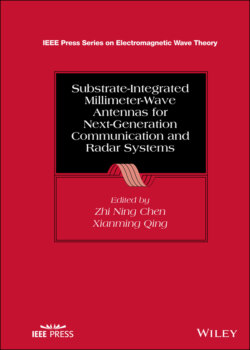Читать книгу Substrate-Integrated Millimeter-Wave Antennas for Next-Generation Communication and Radar Systems - Группа авторов - Страница 15
1.1 Millimeter Waves
ОглавлениеMillimeter waves are regulated by the International Telecommunication Union (ITU) as the electromagnetic waves at the wavelength range of millimeter order, namely, 1–10 mm; the corresponding frequency range is from 30 to 300 GHz, or extremely high frequency (EHF), as listed in Table 1.1. However, the systems operating at the frequencies lower than 30 GHz, such as 24 GHz, are also categorized as millimeter wave (mmW) systems simply because the behaviors of the electromagnetic waves at such frequencies are very similar to those at the defined mmW frequencies. Furthermore, the waves at the wavelength of sub‐millimeter order, namely 0.1–1 mm, or the frequency range from 300 to 3000 GHz, are regulated as “terahertz (THz) wave,” and the waves at the wavelength of 1 mm–1 m, or the frequency range from 300 MHz to 300 GHz, are regulated as “microwave” by ITU [1]. Therefore, the mmW band is located at the upper edge of the microwave band. Accordingly, the wavelengths at the mmW bands are shorter than those at lower microwave bands but longer than those at infrared bands.
The majority of existing wireless communication and radar systems have been long operating at the lower microwave bands. This book will focus on the waves over the mmW bands at the frequency range from 24 to 300 GHz for wireless applications.
